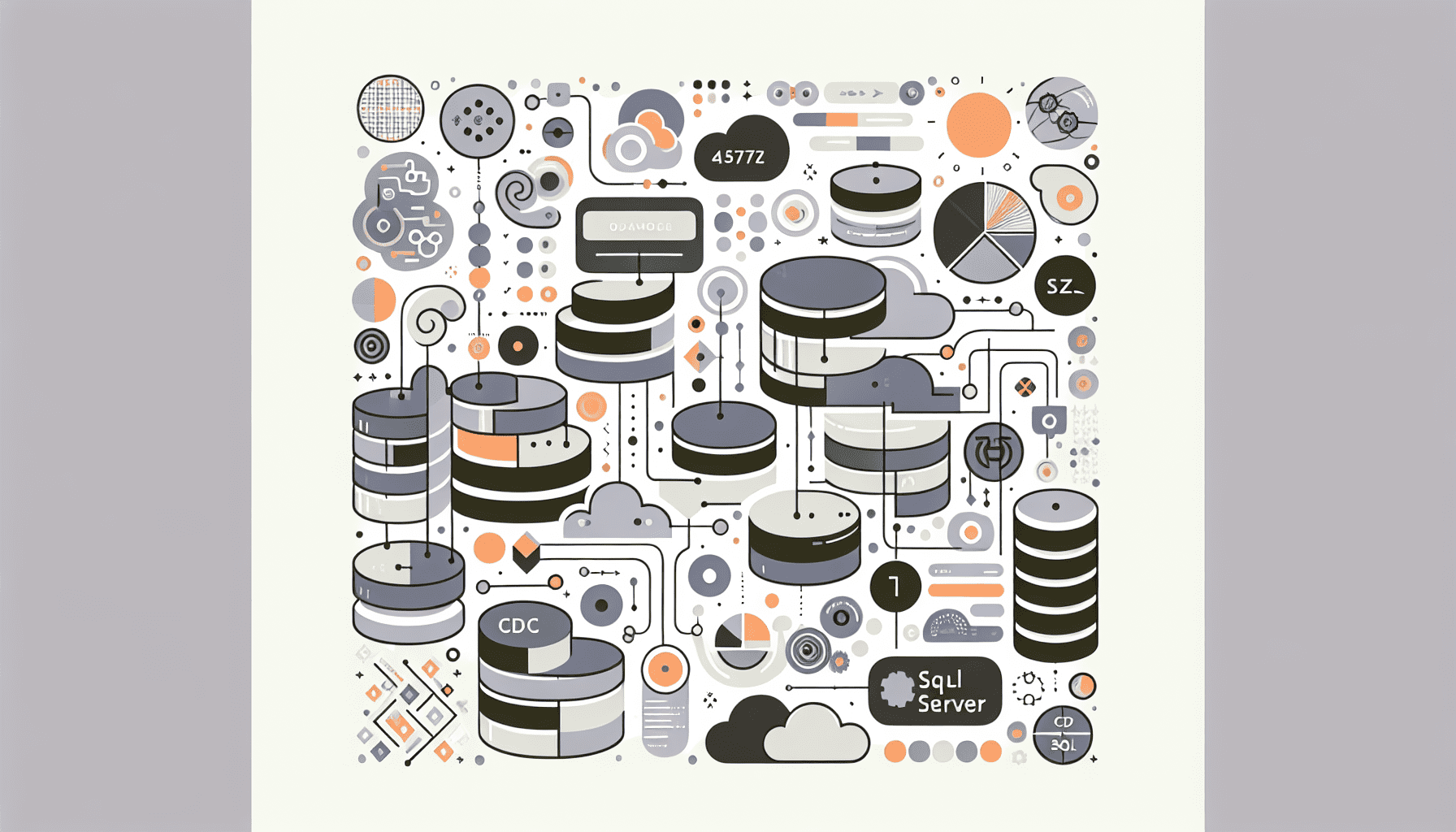Understanding CDC in SQL Server A Comprehensive Guide for Data Analysis

CDC SQL Server Briefly Summarized
- CDC stands for Change Data Capture, a feature in SQL Server for tracking and capturing data changes.
- It enables the identification and delivery of changes made to data in a SQL Server database.
- CDC is particularly useful in data warehousing and real-time data replication scenarios.
- The feature simplifies the process of data synchronization and auditing by providing a detailed change log.
- CDC can be implemented without custom triggers, using SQL Server's built-in functions.
Change Data Capture (CDC) is an essential feature for modern data analysis, particularly when dealing with large and dynamic datasets. In the context of SQL Server, CDC provides a powerful and efficient way to track and record changes in data over time. This capability is crucial for various applications, including data warehousing, business intelligence, and real-time data replication.
Introduction to CDC in SQL Server
Change Data Capture, commonly referred to as CDC, is a feature that was first introduced in SQL Server 2008. It is designed to capture insert, update, and delete operations applied to SQL Server tables and to make this information available for use by applications and services. CDC captures the changes in a way that is easily consumable by data integration tools, ETL (Extract, Transform, Load) solutions, and other data processing applications.
CDC is an approach to data integration that is based on the identification, capture, and delivery of the changes made to enterprise data sources. This approach is delta-driven, meaning that only the changes, or deltas, are captured and transmitted, rather than the entire dataset. This makes CDC an efficient method for data synchronization and movement, as it reduces the volume of data that needs to be transferred and processed.
How CDC Works in SQL Server
CDC operates by tracking changes in the database's transaction log. SQL Server maintains a log to ensure data integrity and to support database recovery operations. CDC leverages this log to capture changes without requiring additional logging mechanisms, which can be resource-intensive.
When CDC is enabled on a table, SQL Server creates a change table that mirrors the structure of the tracked source table. This change table contains metadata columns that provide information about the nature of the change, such as the operation type (insert, update, delete) and the transaction ID.
The CDC process consists of two main components:
- Capture Process: This asynchronous process scans the transaction log and populates the change tables with the changes made to the tracked tables.
- Cleanup Process: This process removes old entries from the change tables to prevent them from growing indefinitely.
Benefits of Using CDC in SQL Server
CDC offers several advantages for data management and analysis:
- Minimized Impact on Performance: Since CDC uses the existing transaction log, it has a minimal performance impact on the source system.
- Real-time Data Replication: CDC enables near real-time data replication, which is essential for high-availability systems and disaster recovery scenarios.
- Simplified Data Auditing: With CDC, it's easier to audit changes and maintain a historical record of data modifications.
- Streamlined Data Integration: CDC facilitates the integration of SQL Server data with other systems, supporting scenarios like data warehousing and business intelligence.
Implementing CDC in SQL Server
To implement CDC in SQL Server, you need to follow these steps:
- Enable CDC at the Database Level: This is done using the
sys.sp_cdc_enable_dbstored procedure. - Enable CDC on Specific Tables: Use the
sys.sp_cdc_enable_tablestored procedure to start capturing changes for individual tables. - Configure CDC Jobs: SQL Server creates two jobs for CDC, the capture and cleanup jobs. These can be configured to run at specific intervals.
Best Practices for CDC in SQL Server
When using CDC in SQL Server, consider the following best practices:
- Monitor Log File Growth: Since CDC relies on the transaction log, ensure that log files are appropriately sized and monitored to prevent space issues.
- Manage Change Table Cleanup: Regularly review and adjust the cleanup process to balance between data retention needs and storage constraints.
- Secure Change Data: Change tables may contain sensitive information. Apply security measures to protect this data.
Conclusion

CDC in SQL Server is a powerful feature that provides a systematic and efficient way to track changes in data. It is an invaluable tool for data analysis, especially in environments where data integrity and timeliness are critical. By leveraging CDC, organizations can enhance their data management capabilities, improve data quality, and enable more informed decision-making.
FAQs on CDC SQL Server
Q: What is CDC in SQL Server? A: CDC, or Change Data Capture, is a feature in SQL Server that captures insert, update, and delete operations on a table, allowing you to track and use the changed data for various purposes.
Q: Why is CDC important for data analysis? A: CDC is important for data analysis because it provides a real-time or near-real-time feed of data changes, enabling more accurate and timely analytics.
Q: Can CDC impact the performance of my SQL Server database? A: CDC is designed to have a minimal impact on database performance since it utilizes the existing transaction log to capture data changes.
Q: How do I enable CDC in SQL Server? A: To enable CDC in SQL Server, you must first enable it at the database level and then for each table you want to track. This is done using specific stored procedures provided by SQL Server.
Q: Is CDC available in all versions of SQL Server? A: CDC was introduced in SQL Server 2008 and is available in most subsequent versions. However, it may not be available in all editions, so it's important to check the documentation for your specific version and edition.
Remember, CDC is a feature that can significantly enhance your data analysis capabilities by providing a detailed and efficient way to track data changes. It's a feature well worth considering for any data-driven organization.
Sources
- Change data capture
- What is change data capture (CDC)? - SQL Server - Microsoft Learn
- An Easier Way to Implement Trigger-Based CDC in SQL Server
- Change Data Capture for auditing SQL Server - SQLShack
- SQL Server CDC (Change Data Capture) - Best Practices - Qlik
- How to Implement Change Data Capture in SQL Server | Integrate.io
- SQL Server CDC for real-time SQL Server Replication | BryteFlow
- Activar CDC (Change Data Capture) en SQL Server - gpsos.es
- What is SQL Server CDC (Change Data Capture): The Guide | Estuary
- Change Data Capture in SQL Server - Aleson ITC
- Enable change data capture (CDC) - SQL Server - Google Cloud